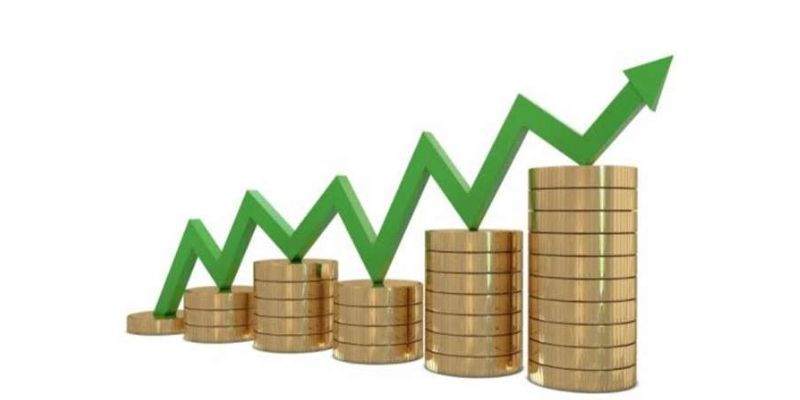Monetary Policy Mastery: Fueling Economic Growth with Smart Decisions
Money talks, and when it comes to monetary policy and economic growth, it roars. Look around you; the economy we navigate each day swings with the rhythm set by central banks’ choices. I’m here to take you on a deep dive into the toolbox that shapes our financial landscape. Together, we’ll uncover how subtle tweaks to interest rates can jumpstart or cool off entire markets, and how a strategy known as quantitative easing acts like a financial defibrillator, giving a jolt to sluggish growth. Ready your mind as we explore the balance between curbing inflation and fostering job growth, two targets central banks aim for with the precision of an archer. Then, we’ll dissect the delicate dance between the government’s fiscal maneuvers and the central bank’s monetary moves. Lastly, we’ll wrap our heads around the real-world results: changes in GDP and consumer wallets. Fasten your seatbelt; it’s time to master the art of monetary policy and steer towards robust economic growth.
Understanding the Tools of Monetary Policy
Interest Rate Adjustments and Economic Activity
When central banks change interest rates, it’s a big deal. Think of interest rates like a gas pedal for the economy. When the economy is slow, cutting rates acts like stepping on the gas, giving businesses and people a boost to spend and invest. Higher rates do the opposite, like a brake. They help cool things down when prices climb too fast. These changes can take time to work through the system. But they’re powerful tools for managing growth.
Quantitative Easing and Its Role in Stimulating Growth
Quantitative easing, or QE for short, is like a vitamin shot for the economy. When usual methods, like tweaking interest rates, aren’t enough, central banks go for QE. They buy stuff like government bonds with new money. This pumps cash into banks, hoping they’ll lend more to folks and businesses. Those shots of cash aim to spark more spending and get the economy moving. It’s a way to stoke up growth when other ways might fall short.

The Dual Mandate: Inflation Control and Employment Maximization
Inflation Targeting Strategies for Stable Prices
Inflation can eat away at your money’s value. Think of it like an ice cream cone on a hot day. Just as the ice cream starts to melt, the value of your money can shrink as prices rise. Central banks use inflation targeting strategies to stop prices from bouncing around like a basketball.
They set a rate, and this is key, as the sweet spot. They want prices just right, not too high or low. This helps folks plan how to spend or save their money. Inflation targeting strategies make sure you can buy the same amount of ice cream today and tomorrow.
Central banks change how much money flows in the economy to tackle inflation. They can turn the money tap on to boost things or off to cool them down. They use tools like interest rates, which are like dials, to adjust the money flow. Lower interest rates mean cheaper loans for folks and businesses. This gets more money moving and can help when the economy feels sluggish.
How Employment Rates are Influenced by Central Bank Decisions
Jobs are a big deal for everyone, right? Central banks know this and work to keep folks employed. Their choices can lead to more or fewer jobs. If a bank sets low interest rates, businesses might say, “Great! Let’s borrow money cheap and hire more people.” This can mean more jobs and folks with paychecks to spend.
But if they worry about too much spending and inflation, banks might raise rates. Then, borrowing costs more. Businesses may slow their roll on expanding. Sometimes, fewer jobs come from this move. It’s a tricky balance to strike. Central banks aim to get as many people working without overheating the economy.
Remember, when the economy is going strong, we might see more jobs and better pay. But if it gets too hot, prices might jump up quicker than a cat on a hot roof. Central banks juggle these goals, trying to keep the ship steady. They want growth that’s just right, with jobs for all who can and want to work.
These decisions ripple through to how much stuff we all can make and do. They also touch everyone’s lives. The goal is a smooth sail for the economy, with good jobs and prices that don’t shock your wallet. Central banks keep a close watch, ready to steer us away from rough waters. They are the captains of our economic ship, guiding us toward a horizon of steady jobs and stable prices.

Interplay Between Fiscal and Monetary Policy
Fiscal Stimulus Interaction with Monetary Tools
Money goes round and round, like a great big wheel. That’s the game of our economy. The central bank is like the driver. It uses tools to steer us to growth or away from trouble. Now, imagine the government stepping in with a boost, that’s fiscal stimulus. It’s like giving the wheel a push while the driver’s still steering.
The central bank sets the price of borrowing money – we call this the interest rate. When rates are low, it’s like having a big sale at your favorite store – everyone wants to buy, right? The same goes for loans. Businesses borrow more to invest and grow. This is what experts call the interest rate impact.
But sometimes the economy needs more help. Enter quantitative easing. The central bank buys up stuff like bonds. By doing so, it pumps cash into the banks. This makes loans easier to get and can fire up the economy. This is the quantitative easing effect.
Now, these central bank policies don’t go it alone. The government can step in with its own power moves. We’re talking about spending on big projects, cutting taxes – that’s fiscal stimulus. It gets more cash into your pocket, so you can spend more. This interaction can really rev up our economic engine.
The Impact of Government Bond Yields on Policy Effectiveness
“Does all this actually work?” you might ask. The answer is not always straight. It’s like baking; even with the right ingredients, you’ve got to watch the oven. Government bond yields are a good temp check. These yields move up and down, signaling if investors think we’re on a solid path.
When the central bank makes money cheap to borrow, the aim is to jolt the economy to life. But if those government bond yields are high, it can signal trouble. It’s like a warning flag. High yields mean it’s expensive for the government to borrow. This can eat into the boost from all that central bank magic.
Think of it like a tug-of-war. On one side, the central bank lowers rates, wanting people to spend and invest. On the other, high bond yields can pull in the opposite direction, making everything more costly. The trick is to find the balance.
As your monetary policy guide, I can say smart moves by the central bank, mixed with well-timed government spending, can lead us to prosperity. But it’s a dance of give and take. Every move matters in fueling our economic growth. Next time you hear about interest rate cuts or a jump in government spending, think about that big wheel. We’re all part of making it spin just right.

The Outcome of Monetary Policy on the Macroeconomy
Analyzing GDP Growth in Response to Central Banking Policies
Let’s talk money, more precisely, how central bank policies make or break our economy’s growth. When a central bank changes its policies, it’s like a captain steering a huge ship. They must get it right, or we all feel the waves. So, how do these policy tweaks help our Gross Domestic Product (GDP) grow?
At the core are interest rates. Think of them as the cost you pay to borrow money. When central banks cut these rates, people and businesses jump at the chance to borrow more. They invest, spend, and by doing this, they fuel the economy’s engine. On the flip side, if interest rates go up, people tighten their belts, spending less. This can cool down an overheating economy. It’s a fine balance, ensuring growth without triggering high inflation.
Now, picture the central bank as a gardener using liquidity—money available to borrow—as water for the economic plants. If there’s not enough money flowing, plants wither; too much, and they might flood. That’s where quantitative easing comes in. It’s when central banks buy up bonds to pour more money into the banking system. They’re hoping banks will lend more and businesses, in turn, will grow and hire.
Meanwhile, inflation targeting strategies are promises to keep price rises under control. If prices jump too much, your money buys less. That’s bad news for everyone. By setting goals for inflation, central banks help everyone from factory workers to big-time CEOs plan their next move with more certainty.
Monetary Policy Transmission and Its Effects on Consumer Spending
How does all this bank talk actually reach you and me? We call it monetary policy transmission. It’s like a message that starts with policy changes and ends up on our shopping lists. When central banks cut interest rates, loans for car or home buying get cheaper. Suddenly, your dream ride or house seems achievable, right?
Then, there’s this thing called fiscal stimulus interaction. That’s when the government spends or cuts taxes to give the economy a quick boost. It works hand in hand with what central banks do. More money in your pocket means you’re likely to spend more on what you’ve been eyeing in the store window.
So, to sum it up: central banks and their complex switches and levers are behind the scenes of everyday prices, what businesses do next, and if you’re likely to get a bigger paycheck. They handle the economy’s tempo, aiming for just the right beat—one that leads to you and your neighbors doing a little more than just getting by.
In this post, we’ve dug into how money rules can shape our economy. We’ve seen how tweaking interest rates can either boost or slow down the cash flow. We talked about how central banks pump money into the system to spark growth—a trick called quantitative easing.
We also covered the big goals of keeping prices stable and getting as many people jobs as possible. This balancing act is tough but key for a healthy economy.
Then, we looked at how the government’s spending plays with the central bank’s moves. Plus, we touched on how what the government pays to borrow money can change the game.
Finally, we saw how all these moves can make our economy grow or shrink and how they hit your wallet through spending. It’s a complex mix, but we broke it down to show how these policies aim to keep our economic ship sailing smooth.
So, that’s the lowdown. Smart money moves by the folks in charge can really matter to our everyday lives and the big picture. It’s a lot to take in, but now you’ve got the basics to see why and how it all matters.
Q&A :
How does monetary policy influence economic growth?
Monetary policy plays a crucial role in managing economic growth by controlling the supply of money and interest rates. Central banks, such as the Federal Reserve in the United States, adjust monetary policy to either stimulate an economy (or certain sectors within an economy) during slow periods of growth or to curb inflation and slow down an economy that is growing too quickly. Lower interest rates can encourage borrowing and investing, while higher rates can help to cool off inflation and excessive growth.
What are the tools of monetary policy used to stimulate economic growth?
The primary tools of monetary policy include adjusting the policy interest rates (often referred to as the federal funds rate in the U.S), conducting open market operations (buying or selling government securities to influence the level of reserves in the banking system), modifying reserve requirements (the amount of funds banks must hold in reserve against deposits), and engaging in forward guidance (communicating future policy intentions to influence financial conditions). By utilizing these tools, central banks can influence lending, borrowing, and overall economic activity.
Can an expansionary monetary policy lead to long-term economic growth?
An expansionary monetary policy can potentially lead to long-term economic growth if it successfully lowers unemployment and increases consumer spending without causing a significant increase in inflation. However, the effect on long-term growth is also dependent on structural factors within the economy such as productivity improvements and demographic changes. Over-reliance on monetary policy to stimulate growth can sometimes lead to asset bubbles or excessive inflation, which can be detrimental to the economy in the long run.
What is the relationship between interest rates and economic growth in monetary policy?
Interest rates are one of the central aspects of monetary policy through which the central bank can influence economic growth. When the central bank lowers interest rates, it reduces the cost of borrowing for businesses and consumers. This typically leads to more investment and consumption, thereby stimulating economic activity. Conversely, raising interest rates can slow down borrowing and spending, which can help to cool an overheated economy and contain inflation.
How does contractionary monetary policy affect economic growth?
Contractionary monetary policy is implemented to slow down economic growth and tame inflation. By increasing interest rates and reducing the money supply, it makes borrowing more expensive, which can lead to a decrease in consumer spending and business investments. Although necessary to prevent an economy from overheating, contractionary policy can also lead to a slowdown in economic activity and an increase in unemployment if used too aggressively or for an extended period.

